2022
Trends in Homicide Rates for US Children Aged 0 to 17 Years, 1999 to 2020. Wilson, R.F., Fortson, B.L., Zhou, H., et al. JAMA Pediatrics. December 2022.
Retinal hemorrhages in abusive head trauma with atraumatic neuroimaging. Simon, C.L., Ude, I., Levin, M.R., et al. Journal of American Association for Pediatric Ophthalmology and Strabismus. December 2022.
ICD-10-CM Codes for the Identification of Abusive Head Trauma in Administrative Datasets. Brown, E., Crumm, C., Crichton, K.G., et al. Academic Pediatrics. December 2022.
Shaken baby syndrome in an infant treated for retinopathy of prematurity with anti-VEGF injection. Devebacak, A., Bekmez, S., Eris, E., et al. Journal of American Association for Pediatric Ophthalmology and Strabismus. December 2022.
Spinal lesions caused by abusive trauma in young children. Vinchon, M., Noule, N., Toubol, A., et al. Child's Nervous System. December 2022.
The Eyes Have It: How Critical are Ophthalmic Findings to the Diagnosis of Pediatric Abusive Head Trauma? Harris, C.K., & Stagner, A.M. Seminars in Ophthalmology. December 2022.
Parental attachment and emotional intelligence mediates the effect of childhood maltreatment on callous-unemotional traits among incarcerated male adolescents. Peng, J., Lu, H., Zhang, J., et al. Scientific Reports. December 2022.
Caring for Caregivers Experiencing Secondary Trauma: A Call to Action. Forkey, H.C., Schulte, E., Thorndyke, L., et al. Clinical Pediatrics. December 2022.
Shaken baby syndrome in Italy: socio-cultural and medico-legal perspective. Menna, G., Tamburrini, G., & Bianchi, F. Child's Nervous System. December 2022.
Trends in public interest in child abuse in the United States: An infodemiology study of Google Trends from 2004 to 2022. Hartwell, M. Hendrix-Dicken, A.D., Sajjadi, N.B., et al. Child Abuse & Neglect. December 2022.
Community home visiting services and child maltreatment report rates, Illinois zip codes, 2011–2018. Kim, H., Flowers, N., & Song, E.J. Child Abuse & Neglect. December 2022.
Child maltreatment reporting during the initial weeks of COVID-19 in the US: Findings from NCANDS. Shusterman G.R., Fluke, J.D., Nunez, J.J., et al. Child Abuse & Neglect. December 2022.
The association of subcortical brain injury and abusive head trauma. Even, K.M., Hymel, K.P., Armijo-Garcia, V., et al. Child Abuse & Neglect. December 2022.
Factors Associated With Referral of Children With a Femur Fracture to a Social Worker by an Orthopedist for Suspected Child Abuse. Yonai, Y., Merav, B.N., Finkel, B., et al. Pediatric Emergency Care. November 2022.
Chest CT in the evaluation of child abuse – When is it useful? Karmazyn, B., Marine, M.B., Wanner, M.R., et al. Child Abuse & Neglect. November 2022.
Survey on Reporting of Child Abuse by Pediatricians: Intrapersonal Inconsistencies Influence Reporting Behavior More than Legislation. Berthold, O., Clemens, V., Levi, B.H., et al. International Journal of Environmental Research and Public Health. November 2022.
Increased severity of abusive head trauma during the first year of the COVID-19 pandemic. Cercone, D.J., Berger, R.P., Manole, M.D., et al. Child Abuse & Neglect. November 2022.
Selective Skeletal Surveys for Infants With Skull Fractures: Examining the Rates of Return to Medical Care for Concern of Physical Abuse. Dominguez, M.M., Moore, J.L., Cook, M., et al. Pediatric Emergency Care. November 2022.
Assessing service quality and access in trauma centers through behavioral health screening, education, and treatment after pediatric injury. Ridings, L.E.,Espeleta, H.C., Streck, C.J., et al. Journal of Pediatric Surgery. November 2022.
Effect of Educational Program on Mothers' Perception and Practices Regarding Crying and Shaken Infant Syndrome. Morgan, E.A., Bahgat, R.S., & Dawood, B.M. Tanta Scientific Nursing Journal. November 2022.
An unusual blunt force trauma pattern and mechanism to the cranial vault: Investigation of an atypical infant homicide. Isaac, C.V., Cornelison, J.B., Devota, C.J., et al. Journal of Forensic Science. November 2022.
Non-accidental head injury of infants: legal implications for the pediatric neurosurgeon. Di Rocco, F., Beuriat, P.A., Mottolese, C., et al. Child's Nervous System. November 2022.
Unexplained mechanism of subdural hematoma with convulsion suggests nonaccidental head trauma: A multicenter, retrospective study by the Japanese Head injury of Infants and Toddlers study (J-HITs) group. Narisawa, A., Nonaka, M., Akutsu, N., et al. PLOS ONE. November 2022.
Underestimating isolated bilateral hygroma as non-accidental head injury with dramatic consequences: a case presentation. Cohrs, G., Winter, S.M., Siska, W., et al. Child's Nervous System. November 2022.
A suspected case of shaken baby syndrome—clinical management in Germany: a case-based overview. Messing-Junger, M., & Alhourani, J. Child's Nervous System. November 2022.
Neuropathology and Ophthalmological Pathology of Fatal Central Nervous System Injuries in Young Children: Forensic Neuropathology of Deaths of Children Under Age 2, 2008–2016, in Central Missouri. Miller, D.C., Stacy, C.C., Duff, D.D., et al. Journal of Neuropathology & Experimental Neurology. November 2022.
Discrepancies between children's and caregivers' child maltreatment reporting and their associations with child wellbeing. Zhang, S., Xu, Y., Hong, J.S., et al. Child Abuse & Neglect. November 2022.
Disparities in detection of suspected child abuse. Diyaola, M., Ye, C., Huang, Z., et al. Journal of Pediatric Surgery. October 2022.
Physical Examination Sensitivity for Skull Fracture in Pediatric Patients with Blunt Head Trauma: A Secondary Analysis of the National Emergency X-Radiography Utilization Study II Head Computed Tomography Validation Study. Akie, T.E., Gupta, M., Rodriguez, R.M., et al. Annals of Emergency Medicine. October 2022.
Abusive head trauma in Japan. Shimoji, K., Suehiro, E., Matsuno, A., et al. Child's Nervous System. October 2022.
Current issues and controversies surrounding spine imaging and the significance of spinal subdural hemorrhage in suspected abusive head trauma. Canty, K.W., Feldman, K.W., Bartnik-Olson, B., et al. Pediatric Radiology. October 2022.
Abusive head trauma in small children — a single-centre experience in Finland. Salokorpi, N., Sinikumpu, J.J., & Serlo, W. Child's Nervous System. October 2022.
Traumatic axonal injury: neuropathological features, postmortem diagnostic methods, and strategies. Chen, Q., Chen, Z., Xu, L., et al. Forensic Science, Medicine and Pathology. September 2022.
Cutaneous manifestations of child abuse and neglect: Part I. Bentivegna, K., Grant-Kels, J.M., & Livingston, N. Journal of the American Academy of Dermatology. September 2022.
Cutaneous mimics of child abuse and neglect: Part II. Bentivegna, K., Grant-Kels, J.M., & Livingston, N. Journal of the American Academy of Dermatology. September 2022.
Effect of a Protocol to Reduce Radiographic Imaging in Pediatric Patients With Suspected Fractures. Schlacter, J.A., Roussos, D., & Masrouha, K. Journal of Pediatric Orthopaedics. September 2022.
Imaging findings in abusive head trauma (AHT). Mannes, I., Drissi, C., & Adamsbaum, C. Child's Nervous System. September 2022.
Traumatic axonal injury: neuropathological features, postmortem diagnostic methods, and strategies. Chen, Q., Chen, X., Xu, L., et al. Forensic Science, Medicine and Pathology. September 2022.
Optical Coherence Tomography and Visual Outcomes in Pediatric Abusive Head Trauma. Kelly, J.P., Feldman, K.W., & Weiss, A. Retinal Cases and Brief Reports. September 2022.
Abusive head injuries in infants: from founders to denialism and beyond. Vinchon, M., & Di Rocco, F. Child's Nervous System. September 2022.
The CAPNET multi-center data set for child physical abuse: Rationale, methods and scope. Kratchman, D.M., Vaugh, P., Silverman, B.L., et al. Child Abuse & Neglect. September 2022.
Prevalence of cerebral sinovenous thrombosis in abusive head trauma. Burtard, C., Panks, J., Silverman, L.B., et al. Pediatric Radiology. Septermber 2022.
The role of the pediatric neurosurgeon in abusive head injuries: a survey of members of the International Society for Pediatric Neurosurgery. Vincho, M., & Di Rocco, F. Child's Nervous System. September 2022.
Nationwide Management of Trauma in Child Abuse: Exploring the Racial, Ethnic, and Socioeconomic Disparities. Joseph, B., Sakran, J., Obaid, O., et al. Annals of Surgery. September 2022.
Factors associated with poor neurological outcome in children after abusive head trauma: A multicenter retrospective study. Regeffe, F., Chevignard, M., Millet, A., et al. Child Abuse & Neglect. September 2022.
Racial Disparities in Child Physical and Sexual Abuse Substantiations: Associations with Childs’ and Accused Individuals’ Race. Atkinson, K.D., Fix, S.T., & Fix, R.L. Journal of Child and Family Studies. August 2022.
Diagnostic Tools in the Detection of Physical Child Abuse: A Systematic Review. Pavone, V., Vescio, A., Lucenti, L., et al. Bone Development and Disease in Infants. August 2022.
Impact of COVID-19 pandemic on child abuse and neglect: A cross-sectional study in a French Child Advocacy Center. Massiota, L., Launay, E., Fleury, J., et al. Child Abuse & Neglect. August 2022.
Change in Incidence and Severity of Abusive Head Trauma in the Paediatric Age Group Pre- and During COVID-19 Lockdown in the North East of England. Salisbury, T., Qurashi, N., & Mansoor, Q. British and Irish Orthoptic Journal. August 2022.
Injuries and child abuse increase during the pandemic over 12942 emergency admissions. Hennocq, Q., Adjed, C., Chappuy, E., et al. Injury. August 2022.
Abusive Head Trauma in Infants During the COVID-19 Pandemic in the Paris Metropolitan Area. Lãzãrescu, A.M., Benichi, S., & Blauwblomme, T. JAMA Network Open. August 2022.
Screening for Child Abuse in Children With Isolated Skull Fractures. Chen, S.Y., Gao, L., Imagawa, K.K., et al. Pediatric Emergency Care. August 2022.
Describing functional skills in children with cerebral palsy close to age 5 years matters. Arnaud C. Developmental Medicine & Child Neurology. August 2022.
False Controversy Regarding Abusive Head Trauma Endangers Vulnerable Children. Edwards, G.A., Maguire, S.A., Gaither, J.R., et al. Child Abuse Review. August 2022.
Child Abuse, a Post-mortem Forensic Perspective. van Rijn, R., Robben, S.G., Fronczek, J., et al. Forensic Imaging. August 2022.
The prevalence of non-accidental trauma among children with polytrauma: A nationwide level-I trauma centre study. Loos, M-L, van Rijn, R.R., Krug, E., et al. Journal of Forensic and Legal Medicine. August 2022.
Transphyseal Distal Humeral Fractures: A 13-Times-Greater Risk of Non-Accidental Trauma Compared with Supracondylar Humeral Fractures in Children Less Than 3 Years of Age. The Journal of Bone & Joint Surgery. July 2022.
Magnetic Resonance Imaging Findings in Infants with Severe Traumatic Brain Injury and Associations with Abusive Head Trauma. Ferguson, N.M., Rebsamen, S., Field A.S., et al. Children. July 2022.
A Multispecialty Approach to the Identification and Diagnosis of Nonaccidental Trauma in Children. Manan, M.R., Rahman, S., Komer, L., et al. Cureus. July 2022.
Emergency Department Child Abuse Evaluations During COVID-19: A Multicenter Study. Chaiyachati, B.H., Wood, J.N., Carter, C., et al. Journal of Pediatrics. July 2022.
Neonatal Abusive Head Trauma without External Injuries: Suspicion Improves Diagnosis. Yoon, S., Lee, Juyoung, Jun. Y.H., et al. Children. July 2022.
Short Falls in Childhood Occasionally Cause Major Brain Injuries Because of Unusual Circumstances. Feldman, K.W., Sokoloff, M., Otjen, J.P., et al. Pediatric Emergency Medicine. July 2022.
Radiologists' Diagnostic Performance in Differentiation of Rickets and Classic Metaphyseal Lesions on Radiographs: A Multicenter Study Karmazyn. B., Marine, M.B., Jones, R.H., et al. American Journal of Roentgenology. July 2022.
Facing the loss of siblings in childhood: Interactions and dynamics between bereaved siblings and their parents. Chi Ho, C.W., Suk Man, L.G., Mei Mui, L.M., et al. Journal of Pediatric Nursing. July 2022.
A Biomechanical Assessment of Shaken Baby Syndrome: What About the Spine? Davison, M.A., Button, K.D., Benzel, E.C., et al. World Neurosurgery. July 2022.
Universal Child Care as a Policy to Prevent Child Maltreatment. Puls, H.T., Chung, P.J., & Anderson, C. Journal of Pediatrics. July 2022.
An analysis of physicians' diagnostic reasoning regarding pediatric abusive head trauma. Hymel, K.P., Boos, S.T., Armijo-Garcia, V., et al. Child Abuse & Neglect. July 2022.
The eye in child abuse. Christian, C.W., & Binenbaum, G. Child's Nervous System. July 2022.
Postmortem computed tomography plus forensic autopsy for determining the cause of death in child fatalities Speelman, A.C., Engel-Hills, P.C., Martin, L.J., et al. Pediatric Radiology. June 2022.
Improving Follow-Up Skeletal Survey Completion in Children with Suspected Nonaccidental Trauma. Ashraf, I.J., Ackley, F., Razawich, D., et al. Pediatric Quality and Safety. June 2022.
Short-Term Effects of Tax Credits on Rates of Child Maltreatment Reports in the United States. Kovski. N.L., Hill, H.D., Mooney, S.J., et al. Journal of Pediatrics. June 2022.
Comparison of abusive head trauma versus non-inflicted subdural haematoma in infants: A retrospective cohort studyversusComparison of abusive head trauma versus non-inflicted subdural haematoma in infants: A retrospective cohort study. Snelling, P.J., Thanasingam, A.A., Jones, P., et al. Emergency Medicine Australasia. June 2022.
Differences Between Viral Meningitis and Abusive Head Trauma. Horton, D., Burrell, T., Moffatt, M.E., et al. Journal of Pediatrics. June 2022.
Identification of Initial and Subsequent Injury in Young Infants. Thackeray, J.D., Crichton, K.G., McPherson, P., et al. Journal of Pediatric Emergency Care. June 2022.
Whole-Spine MRI in Children With Suspected Abusive Head Trauma. Karmazyn, B., Reher, T.A., Supakul, N., et al. American Journal of Roentgenology. June 2022.
Child maltreatment-related children's emergency department visits before and during the COVID-19 pandemic in Connecticut. Amick, M., Bentivegna, K., Hunter, A.A., et al. Child Abuse & Neglect. June 2022.
Circumstances of injury in children with abusive versus non-abusive injuries. Eysenbach, L., Leventhal, J. M., Gaither, J. R., et al. Child Abuse & Neglect. June 2022.
Health services utilization and cost of abusive head trauma in Taiwan: A population-based retrospective matched cohort study. Chang, Y.T., Feng, J.Y., Chang, H.Y., et al. Child Abuse & Neglect. June 2022.
Multiple giant retinal tears due to inflicted injury in a neonate. Sherief, S.T., Dhoot, A.S., Schwartz, S., et al. American Journal of Ophthalmology Case Reports. June 2022.
Traumatic head injury due to child maltreatment: epidemiology, cost analysis, and impact of prevention. Raza H.F., Archambault, E., Pepin, K., Lord, A., et al. Child's Nervous System. May 2022.
Exploring the Vitreoretinal Interface: a Key Instigator of Unique Retinal Hemorrhage Patterns in Pediatric Head Trauma. Song, H.H., Thoreson, W.B., Dong, P., et al. Korean Journal of Ophthalmology. May 2022.
An In-Depth Analysis of Brain and Spine Neuroimaging in Children with Abusive Head Trauma: Beyond the Classic Imaging Findings. Orman, G., Kralik, S.F., Desai, N.K., et al. American Journal of Neuroradiology. May 2022.
Subcortical Lacerations, a Significant Sign of Shaken Baby Syndrome - Diagnosis with High-Resolution Duplex Sonography. Deeg, K.H. European Journal of Ultrasound. May 2022.
Head biomechanics of video recorded falls involving children in a childcare setting. Bertocci, G., Smalley, C., Brown, N., et al. Scientific Reports. May 2022.
The relationship between childhood maltreatment and mental health problems: coping strategies and social support act as mediators. Su, Y., Meng, X., Yang. G., et al. BMC Psychiatry. May 2022.
The association between child maltreatment and sleep disturbances among preschoolers. Wang, Z., Li, W., Cui, N., et al. Child Abuse & Neglect. May 2022.
Identification of Initial and Subsequent Injury in Young Infants. Thackeray, J.D., Crichton, K.G., McPherson, P., et al. Pediatric Emergency Care. May 2022.
Prevalence of inflicted and neglectful femur shaft fractures in young children in national level I trauma centers. Loos, M.L., Bakx, R., Allema, J.H., et al. Pediatric Radiology. May 2022.
An In-Depth Analysis of Brain and Spine Neuroimaging in Children with Abusive Head Trauma: Beyond the Classic Imaging Findings. Orman, G., Kralik, S.F., Desai, N.K. American Journal of Neuroradiology. May 2022.
Parental awareness, knowledge, and attitude about shaken baby syndrome in Riyadh, Saudi Arabia: a cross-sectional study. AlOmran, H.I., AlKharaan, Z.I., AlDawsari, K.M., et al. Pan African Medical Journal. April 2022.
A baby carrier fall leading to intracranial bleeding and multilayered retinal hemorrhages. Raj, A., Christian, C.W., Binebaum, G., et al. Journal of American Association for Pediatric Ophthalmology and Strabismus. April 2022.
Understanding Bilateral Skull Fractures in Infancy: A Retrospective Multicenter Case Review. O'Hara, M.A., Valvano, T., Kashyap, M., et al. Pediatric Emergency Care. April 2022.
Symptomatic Cervical Spinal Cord Injury Without Accompanying Intracranial Injury Because of Child Abuse. Feldman, K.W., Wright, J.N., Menashe, S.J., et al. Pediatric Emergency Care. April 2022.
Complex Pathophysiology of Abusive Head Trauma with Poor Neurological Outcome in Infants. Park, Y.S. Journal of Korean Neurosurgical Society. April 2022.
The Association Between Maternal Shaking Behavior and Inappropriate Infant Parenting: The Japan Environment and Children's Study. Sakakihara, A., Masumoto, T., & Kurozawa, Y. Front. Public Health. April 2022.
Practice Variation in Use of Neuroimaging Among Infants With Concern for Abuse Treated in Children’s Hospitals. Henry, M.K., Schilling, S., Shults, J., et al. JAMA Network Open. April 2022.
Imaging of Abusive Head Trauma: A Radiologists' Perspective. Cheon, J.E., & Kim, J.H. Journal of Korean Neurosurgical Society. April 2022.
Abusive Head Trauma in Infants and Children in Japan. Nonaka, M., & Asai, A. Journal of Korean Neurosurgical Society. April 2022.
Fatal Child Abuse. Palusci, V. Journal of Pain Management. April 2022.
Safeguarding children in trauma and orthopaedics. Martin, E., Kraft, J., Wilder, R., et al. Paediatrics and Child Health. April 2022.
The Role of Social Determinants of Health in Child Mortality and Survival Following Abusive Head Trauma. Singer, T., Warner, C., Mehl, S., et al. Neurosurgery. April 2022.
Biomarkers in Moderate to Severe Pediatric Traumatic Brain Injury-A Review of the Literature. Paraja, J.M., Li, X., Gandham, N., et al. Pediatric Neurology. March 2022.
Prioritizing personal and team well-being: Lessons learned during the pandemic. Asnes, A.G., Kzmir, S., & Leventhal, J.M. Child Abuse & Neglect. March 2022.
A Biomechanical Assessment of Shaken Baby Syndrome: What About the Spine? Davison, M.A, Button, K.D., Benzel, E.C., et al. World Neurosurgery. March 2022.
Health services utilization and cost of abusive head trauma in Taiwan: A population-based retrospective matched cohort study. Chang, Y.T., Feng, J.Y., Chang, H.Y., et al. Child Abuse & Neglect. March 2022.
Caregiver Reports of Infant Distress and Injury in Abused Infants. Rabbitt, A.L., Olson, N.L., Niegl, M.N., et al. Journal of Pediatrics. March 2022.
Retinal hemorrhage after pediatric neurosurgical procedures. Chung, C.W., Levin, A.V., Forbes, B.J., et al. American Association for Pediatric Ophthalmology and Strabismus. March 2022.
Incidence of child abuse with subdural hemorrhage during the first year of the COVID-19 pandemic: a nationwide study in France. Caron, F., Tourneux, P., Kuekou, H.T., et al. European Journal of Pediatrics. March 2022.
Screening for pediatric abusive head trauma: Are three variables enough? Hymel, K.P., Karst, W., Marinello, M., et al. Child Abuse & Neglect. March 2022.
Amyloid Precursor Protein in Abusive Head Trauma Suspects. Minckler, D.S., Brown, D.J., Nalbandian, A., et al. American Journal of Ophthalmology. March 2022.
External Validation of the PediBIRN Screening Tool for Abusive Head Trauma in Pediatric Emergency Department Settings. Hymel, K.P., Fingarson, A.K., Pierce, M.C., et al. Pediatric Emergency Care. March 2022.
Ocular Injuries in Pediatric Patients Admitted With Abusive Head Trauma. Weiss, R., He, C.H., Parsikia, A., et al. Pediatric Neurology. February 2022.
Perception of male and female infant cry aversiveness by adult men. Richey, L., Li, T., & Rilling, J.K. Journal of Reproductive and Infant Psychology. February 2022.
Abusive head trauma follows witnessed infant shaking. Feldman, K.W., Melville, J.D., Valvano, T.J., et al. Child Abuse Review. February 2022.
Ophthalmological lesions in shaken baby syndrome: a retrospective analysis of 133 consecutive cases (1992-2018). Moskwa, R., Todeschi, J., Wiedemann-Fode, A., et al. Neurochirurgie. February 2022.
The effect of a shaken baby syndrome prevention program on Turkish mothers' awareness and knowledge: A randomized controlled study. Kaya, A., Çelik, D., & Efe, E. Journal for Specialists in Pediatric Nursing. February 2022.
The role of household composition of children diagnosed with abusive head trauma. Eismann, E.A., Theuerling, J., & Makoroff, K.L. Child Abuse & Neglect. February 2022.
Early Diagnosis of Abusive Head Trauma to Avoid Repetitive Shaking Events. Depallens, S., Favrod, C., Maeder, P., et al. Global Pediatric Health. January 2022.
The Association of Low-Income Housing Tax Credit Units and Reports of Child Abuse and Neglect. Shanahan, M.E., Austin, A.E., Durrance, C.P., et al. American Journal of Preventive Medicine. January 2022.
Multi-modality imaging characteristics of costochondral fractures, a highly specific rib fracture for child abuse. Forbes-Amrhein, M.M., Gensel, A.J., Cooper, M.L., et al. Pediatric Radiology. January 2022.
The Relationship Between Temperature and Temporal Patterns and Incidence of Abusive Head Trauma in a Midwest Region Hospital. Bliss, L., Mehta, N., Trolard, A., et al. Child Maltreatment. January 2022.
Pediatric skull fractures: could suture contact be a sign of abuse? Uçan, B., Tokur, O., & Aydin, S. Emergency Radiology. January 2022.
A National Analysis of Ophthalmic Features and Mortality in Abusive Head Trauma. Shah, Y.S., Iftikhar, M., Justin G.A., et al. JAMA Ophthalmology. January 2022.
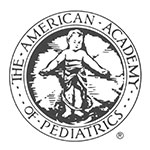 The AAP continues to affirm the dangers and harms of shaking infants, continues to embrace the “shaken baby syndrome” diagnosis as a valid subset of the AHT diagnosis, and encourages pediatric practitioners to educate community stakeholders when necessary.
The AAP continues to affirm the dangers and harms of shaking infants, continues to embrace the “shaken baby syndrome” diagnosis as a valid subset of the AHT diagnosis, and encourages pediatric practitioners to educate community stakeholders when necessary.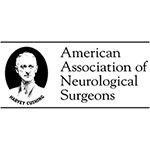 Shaken Baby Syndrome (also known as Shaken Impact Syndrome) is a serious form of abuse inflicted upon a child. It usually occurs when a parent or other caregiver shakes a baby out of anger or frustration, often because the baby will not stop crying.
Shaken Baby Syndrome (also known as Shaken Impact Syndrome) is a serious form of abuse inflicted upon a child. It usually occurs when a parent or other caregiver shakes a baby out of anger or frustration, often because the baby will not stop crying.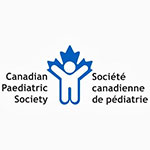 Shaken Baby Syndrome is a collection of findings, all of which may not be present in any individual child with the condition. Injuries that characterize Shaken Baby Syndrome are intracranial hemorrhage (bleeding in and around the brain); retinal hemorrhage (bleeding in the retina of the eye); and fractures of the ribs and at the ends of the long bones.
Shaken Baby Syndrome is a collection of findings, all of which may not be present in any individual child with the condition. Injuries that characterize Shaken Baby Syndrome are intracranial hemorrhage (bleeding in and around the brain); retinal hemorrhage (bleeding in the retina of the eye); and fractures of the ribs and at the ends of the long bones.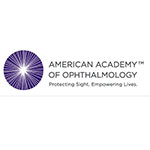 Shaken Baby Syndrome is a subset of Abusive Head Trauma characterized by repetitive acceleration-deceleration forces with or without blunt head impact resulting in a unique complex of ocular, intracranial, and sometimes other injuries, usually in infants…it has become widely recognized as one of the most serious manifestations of physical child abuse.
Shaken Baby Syndrome is a subset of Abusive Head Trauma characterized by repetitive acceleration-deceleration forces with or without blunt head impact resulting in a unique complex of ocular, intracranial, and sometimes other injuries, usually in infants…it has become widely recognized as one of the most serious manifestations of physical child abuse.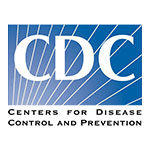 Abusive head trauma (AHT), which includes shaken baby syndrome, is a preventable and severe form of physical child abuse that results in an injury to the brain of an infant or child. AHT is most common in children under age five, with children under one year of age at most risk. It is caused by violent shaking or blunt impact.
Abusive head trauma (AHT), which includes shaken baby syndrome, is a preventable and severe form of physical child abuse that results in an injury to the brain of an infant or child. AHT is most common in children under age five, with children under one year of age at most risk. It is caused by violent shaking or blunt impact.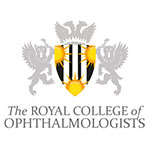
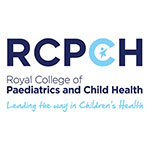 A child suspected of abusive head injury is referred by paediatricians to an ophthalmologist for evaluation. The incidence of abusive head injury in children is highest in infancy and less frequently seen in children over 3 years of age. Retinal haemorrhages have a high positive predictive rate for abusive head injury.
A child suspected of abusive head injury is referred by paediatricians to an ophthalmologist for evaluation. The incidence of abusive head injury in children is highest in infancy and less frequently seen in children over 3 years of age. Retinal haemorrhages have a high positive predictive rate for abusive head injury.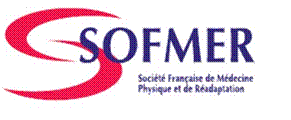 SBS is a type of inflicted, non-accidental or abusive head injury caused by shaking (either alone or combined with an impact). It mainly occurs in babies under the age of one. It is thought that 180 to 200 children per year are victims of this type of abuse in France, although this value is certainly an underestimate. Failure to diagnose SBS increases the likelihood of recurrence.
SBS is a type of inflicted, non-accidental or abusive head injury caused by shaking (either alone or combined with an impact). It mainly occurs in babies under the age of one. It is thought that 180 to 200 children per year are victims of this type of abuse in France, although this value is certainly an underestimate. Failure to diagnose SBS increases the likelihood of recurrence. SBS, a form of non-accidental trauma, occurs when babies are shaken. This shaking damages the brain and eyes and can lead to lifelong consequences including death. When there is suspected abuse an eye examination is performed to look for injury. The eye examination is only one aspect of an SBS diagnosis. An evaluation includes multiple experts who examine the child’s brain, bones, and environment. Alternate explanations for injuries are looked into and tested prior to diagnosing SBS.
SBS, a form of non-accidental trauma, occurs when babies are shaken. This shaking damages the brain and eyes and can lead to lifelong consequences including death. When there is suspected abuse an eye examination is performed to look for injury. The eye examination is only one aspect of an SBS diagnosis. An evaluation includes multiple experts who examine the child’s brain, bones, and environment. Alternate explanations for injuries are looked into and tested prior to diagnosing SBS.


Donate